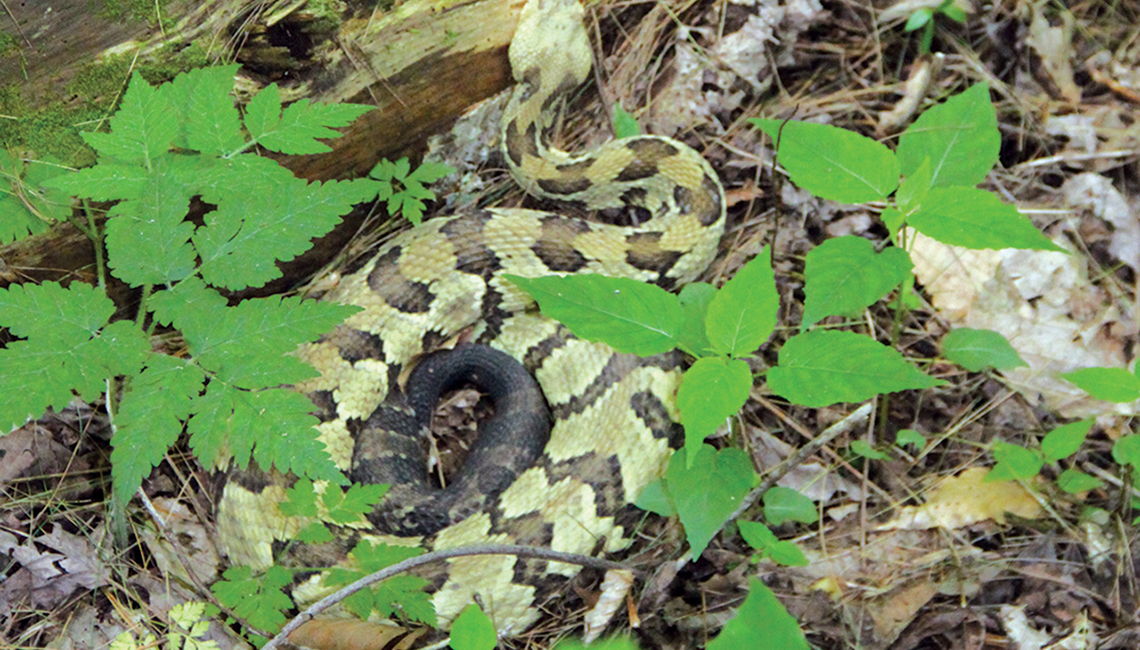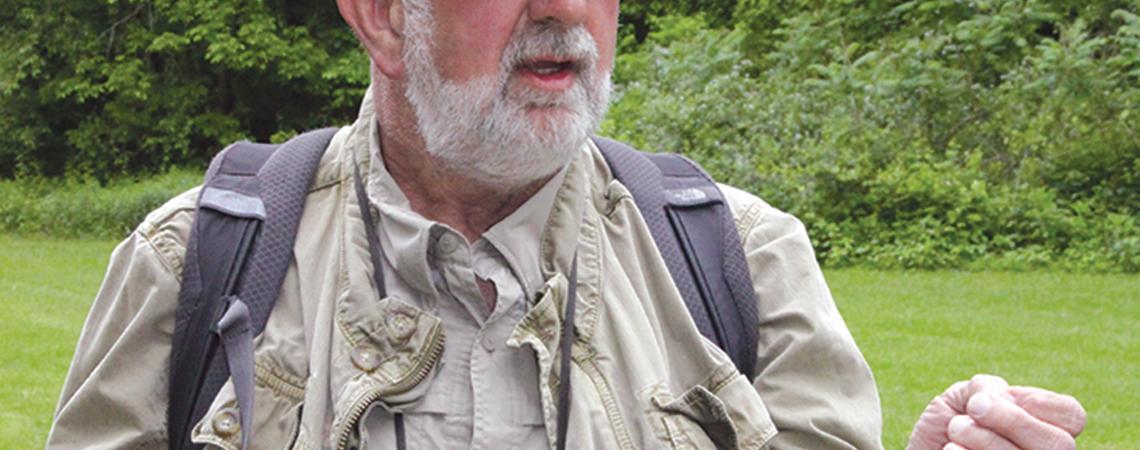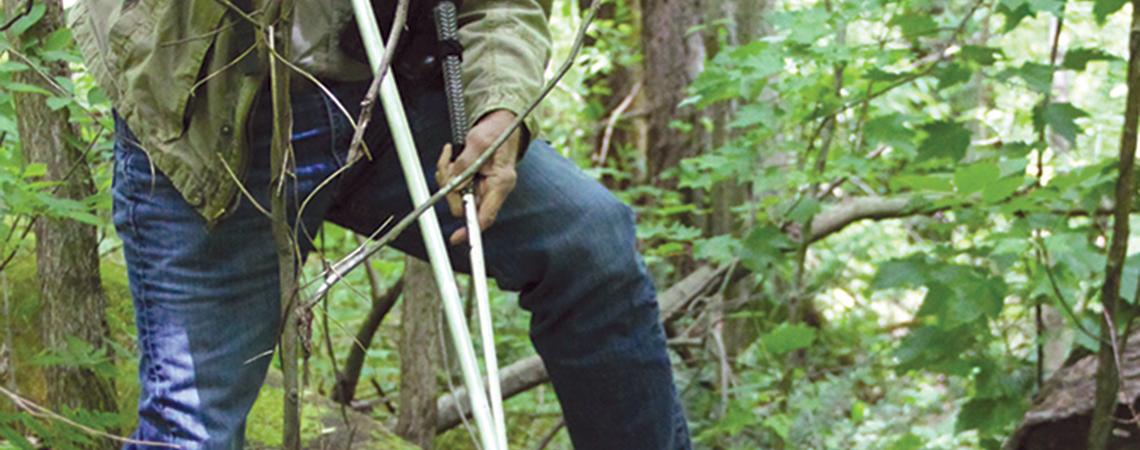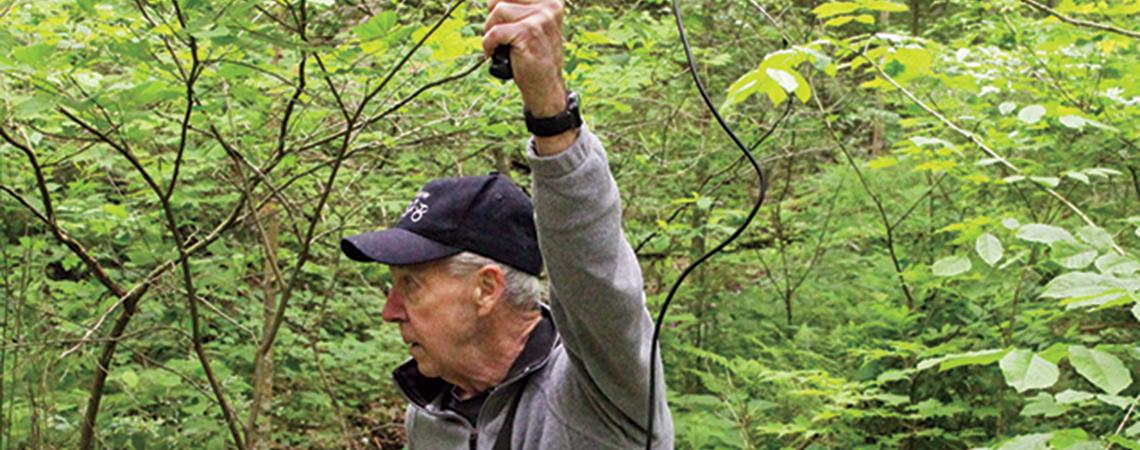Unlike many people, Doug Wynn likes snakes. He likes them so much that he began studying them decades ago, and has since become Ohio’s leading expert on the state-endangered timber rattlesnake. A retired high school ecology teacher, Wynn is currently a visiting scholar at Ohio State University.
“Timber rattlesnakes are extremely docile,” says Wynn. “I have approached more than 700 rattlesnakes in the wild, and only three actually rattled. I’ve never even had one strike at me … until I tried to catch it. Then look out, because they are like living lightning and will strike multiple times.”
Doug Wynn, a member of Logan County Electric Cooperative, is Ohio’s leading expert on timber rattlesnakes.
Wynn has never been bitten, yet is still extremely cautious around the snakes, always handling them with a metal catch-stick. “A rattlesnake can strike the entire length of its body,” he says. “Meaning that a 3-foot snake — which is about the typical length in Ohio — can strike a distance of at least 3 feet. So, if you ever happen across one in the woods, give it a wide berth.”
The chances of that, however, are pretty slim. Historically found in most every county plus the Lake Erie islands, only four small remnant timber rattlesnake populations remain, located in the extreme southern portion of the state: Shawnee State Forest, Tar Hollow State Forest, Vinton Furnace Experimental Forest, and one area of Wayne National Forest.
During his fieldwork, Wynn — a member of Logan County Electric Cooperative — makes finding snake dens a priority. By doing so, he can begin the process of notifying wildlife conservation organizations to help protect not only the den site but many, if not all, of the snakes that use the surrounding area. Rattlesnake dens are wintering areas located a few feet underground. Unlike dens in surrounding states, Ohio dens may or may not be located in a rock outcropping. For instance, an Ohio den opening may consist of a simple hole in the ground.
All the rattlesnakes Wynn and his fellow researchers encounter receive a microchip for identification — similar to those placed in domestic pets. A few of the snakes are also implanted with radio-telemetry transmitters for tracking purposes. Wynn says that the radioed snakes can then be detected from as far away as a kilometer (a little more than half a mile), though they’re most easily located from the air via a helicopter provided by the Ohio Division of Wildlife.
Why are timber rattlesnakes endangered in Ohio but not nationally? One of the reasons — in addition to persecution by humans — is a low reproductive rate. “The females don’t reproduce until age 6, then every four years after that,” says Wynn. “A typical litter size is only about seven.”
The snakes counter their low reproduction by being long-lived, from 25 to as many as 50 years. One individual rattler, captured in the state of New York, had been marked as an adult 43 years earlier.
Females give birth to live young, not in their winter dens but during late summer under a birthing log or in a hollow stump, which they defend from predators and other snake species. Wynn says that an area must have a minimum of 30 to 40 timber rattlesnakes to sustain a viable population.
Feeding primarily on small rodents, timber rattlesnakes are ambush hunters. Choosing a small log to coil up against, they rest their head on the log. As supper arrives — in the form of a mouse, chipmunk, or squirrel — and runs along the length of the log, the snake strikes. An interesting side note is that opossums are immune to rattlesnake venom.
According to Wynn, the last human snakebite fatality in Ohio occurred in 1947. “A young mother near Tar Hollow State Park was bitten on the hand and died a few days later,” he says. “The best first aid for snakebite is your vehicle: Get to a hospital ASAP and try to remain calm so as not to spread the venom through your body more quickly — though I don’t know how anyone could remain calm in a situation like that. I certainly couldn’t.”
W.H. “Chip” Gross is Ohio Cooperative Living’s outdoors editor and a member of Consolidated Cooperative.












